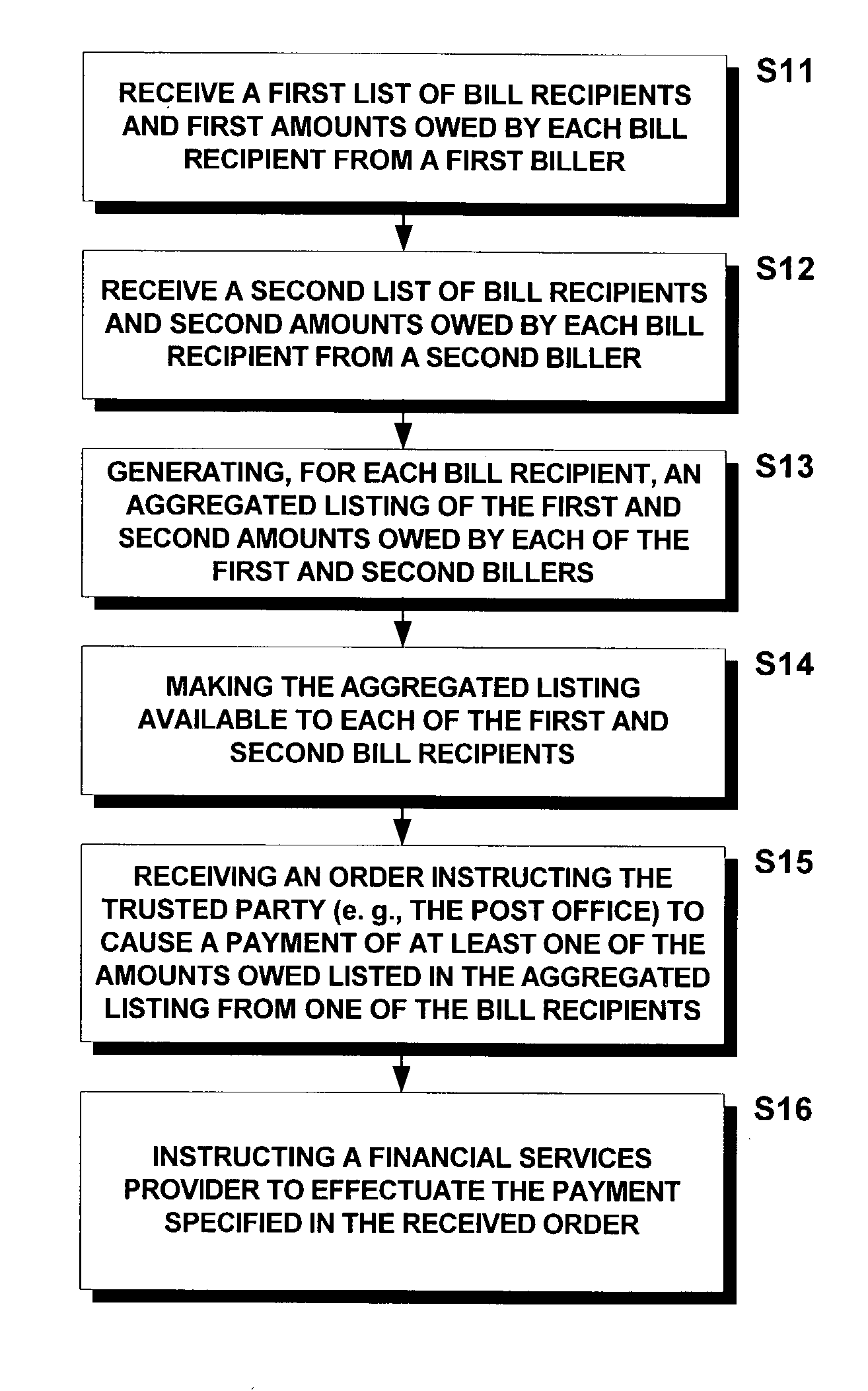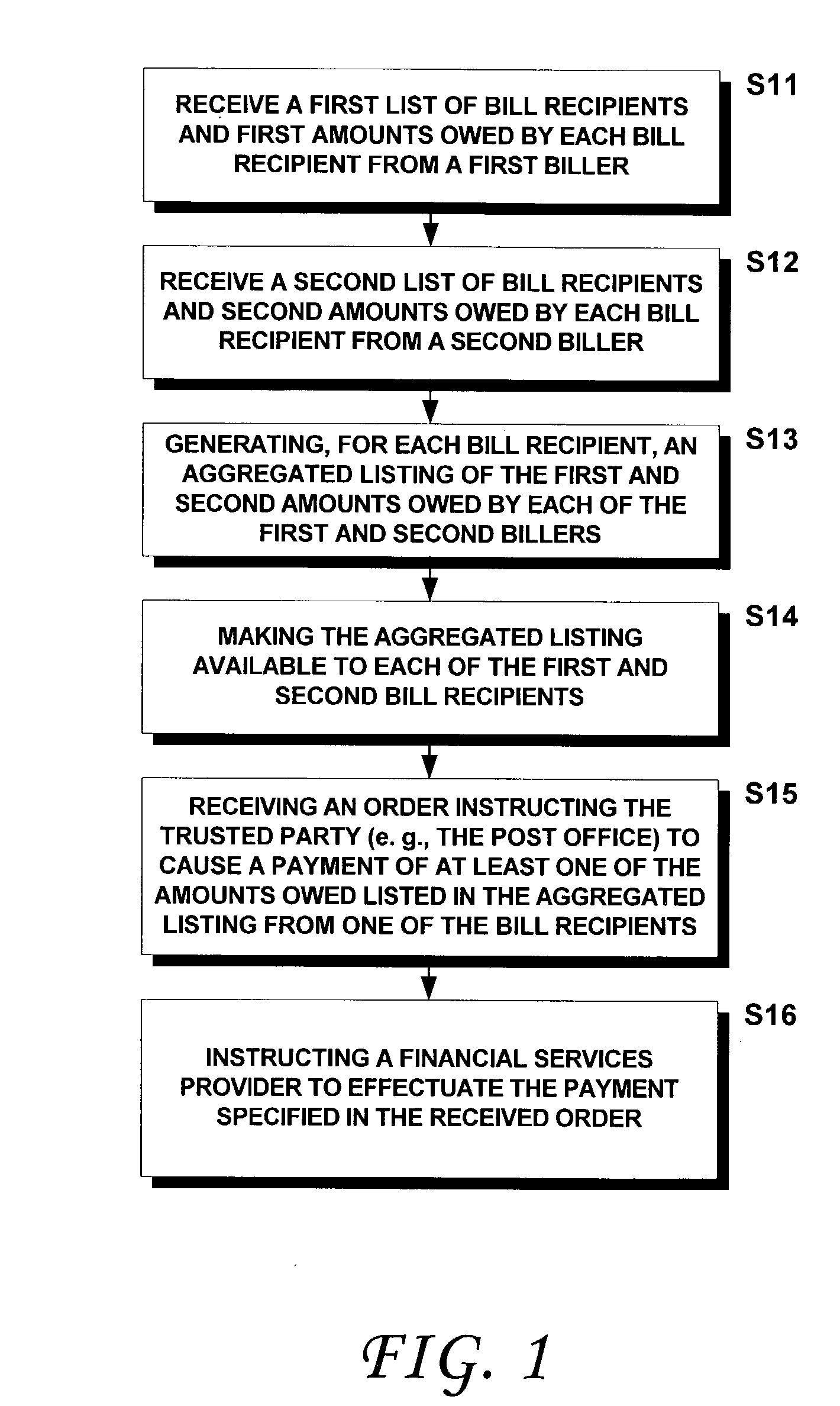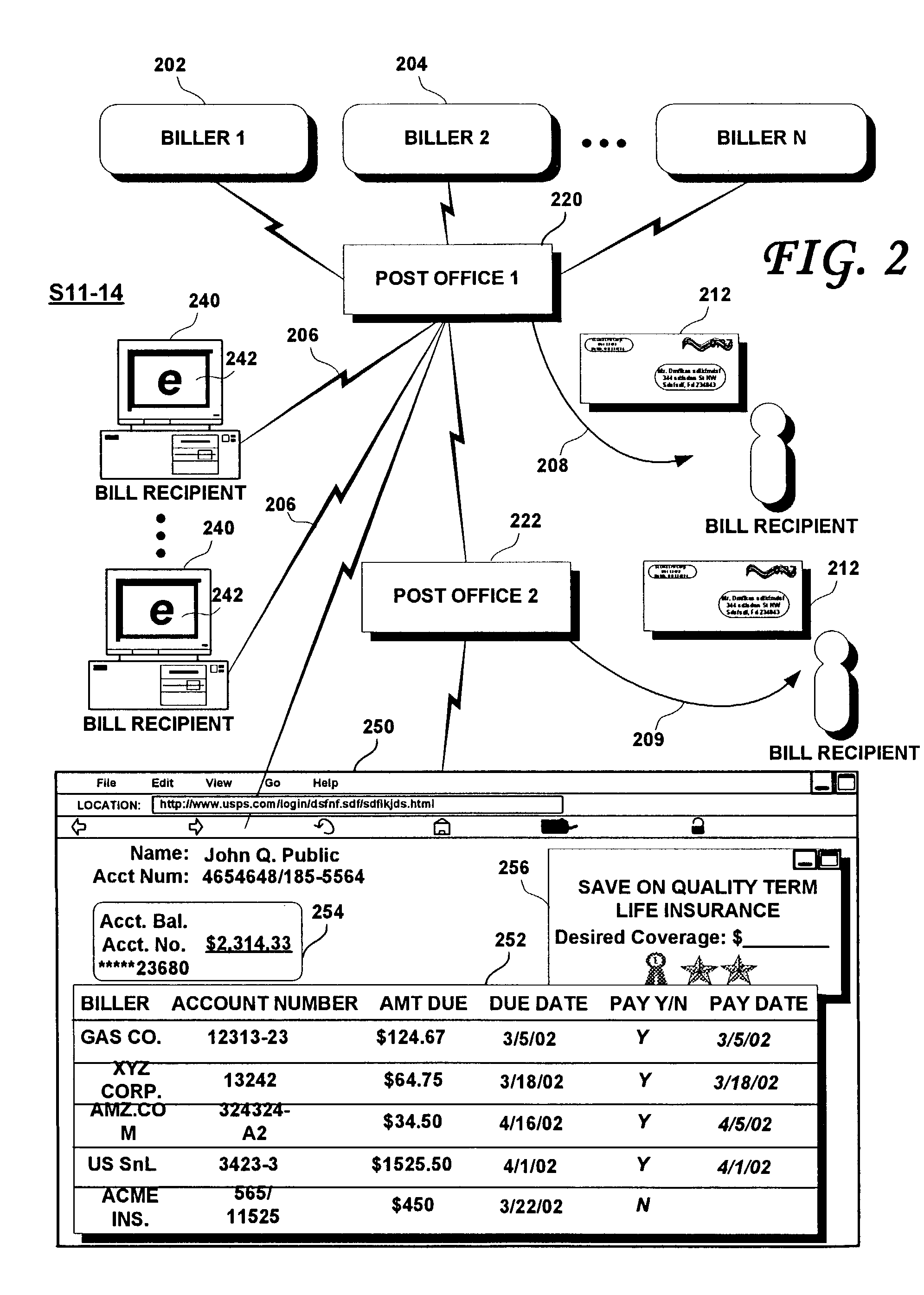Aggregated postal billing and payment methods and systems
a postal billing and payment system technology, applied in the field of electronic bill aggregation, presentment and payment, can solve the problems of increasing the price the buyer must pay, credit card and paper check costs, and current methods and systems for electronic bill presentment and payment, so as to reduce the number of individual paper bills and reduce the latency. , the effect of low cost and reliability
- Summary
- Abstract
- Description
- Claims
- Application Information
AI Technical Summary
Benefits of technology
Problems solved by technology
Method used
Image
Examples
Embodiment Construction
[0022]Functional Overview
[0023]FIG. 1 is a flowchart of an embodiment of the present invention. FIG. 2 is a diagram illustrating further aspects of the present invention. Considering now FIGS. 1 and 2 collectively, a trusted entity 220 (such as, for example, the Post Office) may process bills (e.g., collect, aggregate, present the aggregated bills to its customer and process payment thereof) according to the present invention, by carrying out some or all of the following steps. The Post Office may be the United States Post Office or USPS, although the present invention is applicable to other trusted entities as well as to the Post Offices of other countries. As shown at step S11, the present method calls for the Post Office 220 to receive a first list of bill recipients (customers or buyers) and corresponding first amounts owed by each bill recipient from a first biller (a seller), referenced in FIG. 2 at 202. That is, a biller 202 (such as the electric company, for example) may per...
PUM
 Login to View More
Login to View More Abstract
Description
Claims
Application Information
 Login to View More
Login to View More - R&D
- Intellectual Property
- Life Sciences
- Materials
- Tech Scout
- Unparalleled Data Quality
- Higher Quality Content
- 60% Fewer Hallucinations
Browse by: Latest US Patents, China's latest patents, Technical Efficacy Thesaurus, Application Domain, Technology Topic, Popular Technical Reports.
© 2025 PatSnap. All rights reserved.Legal|Privacy policy|Modern Slavery Act Transparency Statement|Sitemap|About US| Contact US: help@patsnap.com



